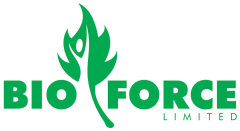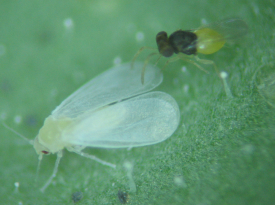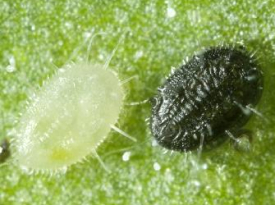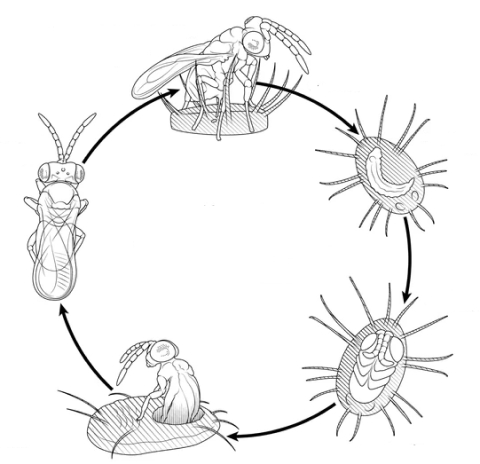- Track your orders
- Save your details for express checkout



Shopping
Nemaplus - Steinernema feltiae
Entomopathogenic nematode, species Steinernema feltiae
Infective juveniles of a threadworms that parasitises a large variety of insect prey, especially scirarid flies (fungus gnats), shore flies, root aphids and thrips pupae. 100% safe to humans and pets.
nemaplus contains "infective juveniles", the hunting life-stage.
The infective juveniles of nemaplus actively seek out suitable prey. Once found, they crawl inside the prey through breathing spiracles or other orifices, release a beneficial bacteria to break the pests internal organs down and feeds on the bacterial slurry. The nematodes then breed in the cadaver, which eventually breaks apart releasing more nematodes into the growing media.
Product: nemaplus
-
Primarily used for the control of fungus gnats and thrips pupae in the growing mediabtn order
-
Can be sprayed on the foliage and flowers to control thrips adults and juveniles
-
Powdered formulation - improved shelf-life over gel products
Product: nemaflor
-
Primarily used for the control of fungus gnats and Primarily used for the control of thrips adults and juveniles when sprayed on the the foliage and flowersbtn order
-
For use on crops where zero visible residue is acceptable, otherwise use nemaplus
-
Gel formulation - reduced shelf-life over powdered formulation

The pest: whitefly (left) & the solution: Encarsia (right)

Normal whitefly pupa (white) and parasitized pupa (black). An adult Encarsia will emerge from the black scale(right)
The Pest: Fungus gnats
The larvae of fungus gnats (sciarid fly) cause damage to the roots of plants. They are white or translucent, legless, and have a shiny black head. They are usually found just below the soil surface in association with decaying plant material, moss, algae and roots (unfortunately).
Adult fungus gnats are small, dark, two-winged flies with long legs similar to mosquitoes. Adults are approximately 3 mm long and are weak, erratic fliers. They are more prevalent in greenhouses, but may also become numerous outdoors.
The life cycle of fungus gnats takes approximately 25 days at temperatures above 20 C.
Ideal conditions for fungus gnat outbreaks are high humidity, high soil or growing media organic matter, water-saturated soil or growing media, presence of moss and algae and decaying plant material.
Fungus gnat larvae cause damage to plants by feeding on the roots. Fungus gnats can also spread plant fungal disease throughout a greenhouse on adults, and by larvae through the soil.
Signs and symptoms of fungus gnats include:
-
Plants lack vigour and leaves may turn yellow
-
Small brown scars are evident on roots, and root hairs are eaten off
-
With heavy larval infestations, plants can be weakened severely and die
The Pest: Thrips Pupae
Adult thrips are small, slender insects with delicate wings fringed with hair. The wings are folded over the abdomen of the adults, younger thrips are wingless and usually paler and more uniform in colour.
Thrips have piercing sucking mouth parts and feed by puncturing the surface of flowers and young leaves and sucking up the plant juices. Both adults and nymphs cause damage. Thrips are often concealed inside flowers making them difficult to see, feeding on the flower can cause damage and deformities to the fruit.
Thrips pupate on the soil surface, and as such are especially vulnerable to nematodes during the pupal phase of their life cycle.
Signs and symptoms of thrips include:
-
Distortion of young leaves and fruit
-
Spotting on flowers
-
Yellow speckled areas on leaves
-
Silvered appearance of older leaves
-
Black spots of thrips excrement on leaves
-
Small insects in the flowers or on the undersides of young leaves in your crop.
Life Cycle
Enforce lays its eggs within the whitefly larvae developing on the leaves. Enforce can eat whitefly eggs and young larvae, the preference is to lay eggs in the third and fourth larvae instars.
A wasp life cycle will take between 10 and 30 days, depending on temperature.

Environmental Conditions
Enforce works best at temperatures of 20-28 C, below 18 C the wasp's activity decreases, and temperatures above 38 C are lethal. Temperature is required to be above 10.3C for the Enforce larvae to develop.
Packaging
Enforce is supplied as black parasitized greenhouse whitefly nymphs or black 'scale' on cardboard tags, and the adult wasp emerges from this 'scale'.
Two tag sizes are available:
Application Rates
-
50 million nematodes treats 100 m2 of soil/media
-
Or 10,000 nematodes per litre of potting mix
-
Or 15,000 nematodes per litre of substrates
A single application of nemaplus protects crops for approximately 6 weeks. For heavy sciarid fly infestations, repeat treatment after 10-14 days.
Please seek the assistance of a crop scout or phone or email us directly for guidance. The advice above is indicative only, and more specific advice may be beneficial.
The nematodes are infective when the media temperature ranges from 10 to 25C. At higher and lower temperatures, nematode efficacy decreases.
The media should be moist but not sodden. Nematodes cannot swim and cannot move effectively in water-saturated potting mix.
Release and Storage Instructions
-
nemaplusŪ should be used as soon as possible upon delivery.
-
The package may be stored at 4 to 10°C, such as in the fridge, for several weeks (see expiry date on package).
-
DO NOT FREEZE or exposed to more than 30°C.
-
Nematodes can be applied with watering cans or through more commercial methods
-
Normal spraying equipment can be used as well as drip-irrigation or a dosatron
-
If possible skip irrigation once before the treatment to avoid compost to becoming too wet.